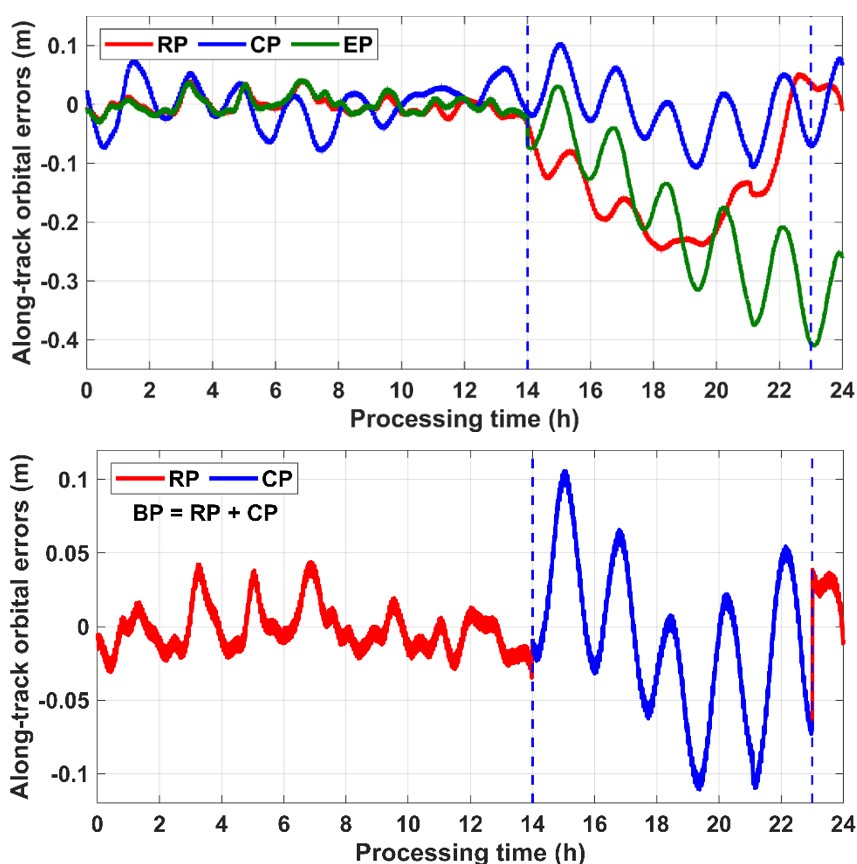Recently, an international research team from the National Time Service Center(NTSC), Chinese Academy of Sciences(CAS), and Curtin University, Australia, proposed a novel method to improve the accuracy and integrity of LEO orbit predictions.
This study was published in the international journal NAVIGATION: Journal of the Institute of Navigation on July 23, entitled “The Effect of Observation Discontinuities on LEO Real-Time Orbital Prediction Accuracy and Integrity”.
Benefiting from the advantages like the lower orbital altitudes, faster speeds, and stronger signals, Low Earth Orbit (LEO) satellites can significantly enhance the positioning and timing performances of the traditional Global Navigation Satellite Systems (GNSS). In the future, ground-based high-precision LEO-augmented navigation and timing applications will rely on high-accuracy real-time orbital products. All real-time orbits are predicted orbits, and the accuracy and integrity of the predicted orbits are directly affected by the quality of near-real-time Precise Orbit Determination (POD).
In real-world engineering scenarios, onboard GNSS observations of LEO satellites could experience significant interruptions due to factors such as data downlinking strategies, receiver tracking performance, and the scheduling of other tasks. These interruptions can severely degrade the accuracy of near-real-time POD, which in turn affects the quality of the predicted orbits and ultimately compromises the accuracy and integrity of the real-time orbital products delivered to users.
To address the challenges posed by imperfect GNSS observation status and large observation gaps for LEO satellites, the two teams carried out international joint research. Focusing on various gap durations and lengths of the tail segments after the gaps, the team optimized, combined, and adjusted different LEO POD strategies. By improving the near-real-time POD under conditions of large data gaps, they effectively enhanced the short- to mid-term LEO satellite orbit prediction accuracy. In addition, they explored and assessed the integrity of the predicted orbits under different gap scenarios.
According to Prof. Kan Wang, the team leader of the LEO satellite precise orbit and clock determination from the NTSC, the proposed method helps improve the LEO satellite POD strategy in the presence of significant GNSS observation gaps.
This approach improves the accuracy and integrity of LEO orbit predictions, ensuring that future users of LEO-augmented Positioning, Navigation and Timing (PNT) services can access precise and reliable real-time LEO satellite orbital products, even under imperfect data status. This should help enhance the precision and integrity of the future LEO-augmented BeiDou/GNSS positioning and timing.
In this study, the Sentinel-6A satellite with an orbital altitude of approximately 1300 km was used as a case example to demonstrate the impact of large observation gaps on near-real-time POD using different dynamic modeling strategies. As shown in Fig. 1, by combining the chosen strategy for non-gap periods (RP) with that for the gap periods (CP), the near-real-time POD approach was adjusted for data-interrupted scenarios. They further conducted a detailed analysis of short- to mid-term orbit prediction accuracy and integrity under different gap scenarios.
As noted by one of the reviewers, this study presents a valuable investigation into LEO orbit determination considering practical data gap scenarios, extending beyond idealized simulations.
This research was supported by the International Partnership Program of the Chinese Academy of Sciences (021GJHZ2023010FN).

Fig 1. Near-real-time along-track LEO satellite orbital accuracy applying different orbit determination strategies (top) and the adjusted strategy (bottom) under large GNSS observation gap(Imaged by Chen et al. 2025)
 Print
Print